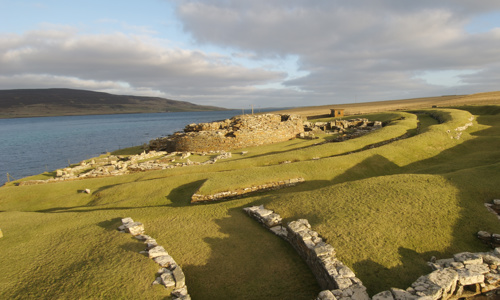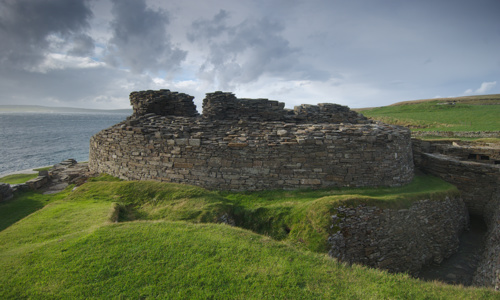History
Saga site
Cubbie Roo’s Castle is first mentioned in the Orkneyinga Saga as a ‘fine stone castle’ built in 1145 by the great Kolbein Hruga – also known as Cubbie Roo. This makes it the earliest documented medieval stone castle in Scotland.
The castle’s impressive defensive strength is recounted in another saga. Haakonar Saga tells us about how the castle was besieged in 1231, describing the castle as a ‘very unhandy place to attack’.
The Norse did not build stone castles in their homelands, and there are very few known Norse castles in Britain. In terms of preservation, the only Norse castle that comes close to Cubbie Roo’s Castle is the Castle of Old Wick, which is thought to be of a later date.
A simple place of worship
St Mary’s Chapel was built down the hill from the castle a few years later, either by Kolbein Hruga or his son Bjarni, who later became bishop of Orkney.
The chapel stands in a small historic cemetery with a modern extension. While the chapel was ruined by the end of the 1700s, its cemetery remains in use. Today St Mary’s Chapel stands as a fine example of simple Norse Romanesque architecture.
Both Cubbie Roo’s Castle and St Mary’s Chapel stand as significant evidence of the Norse character of northern Scotland. Orkney was under Norwegian control for 500 years, and this Norse heritage is particularly valued by both present-day Orcadians and Norwegians.














